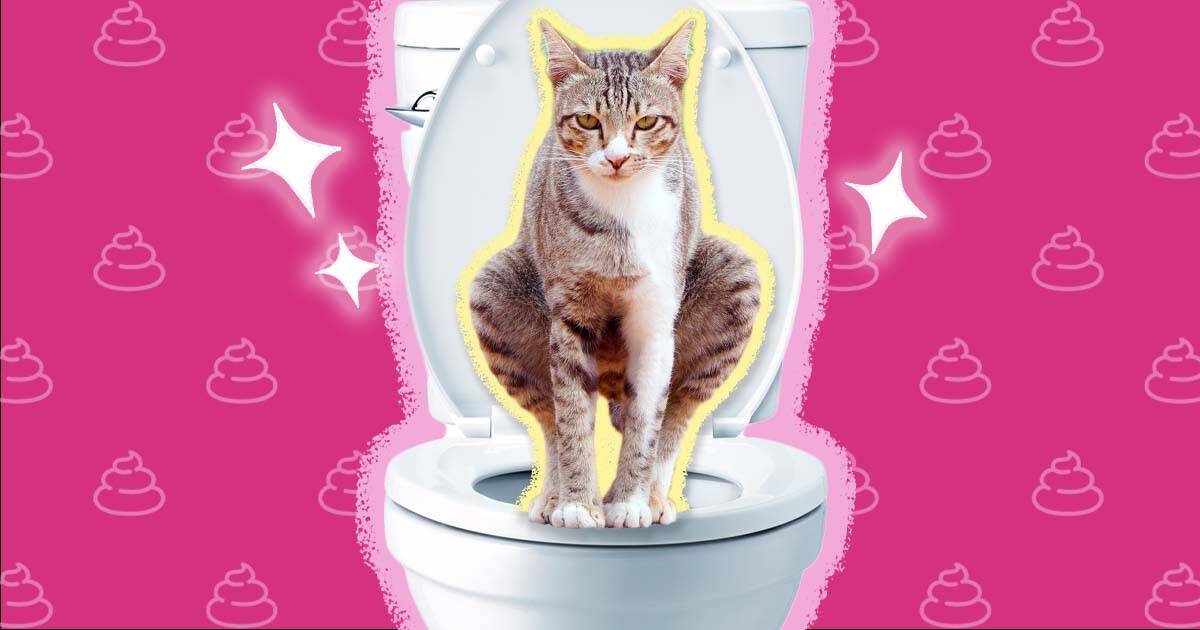Prevent Plumbing Problems: Don't Flush Cat Poop Down Your Toilet - Professional Advice
Prevent Plumbing Problems: Don't Flush Cat Poop Down Your Toilet - Professional Advice
Blog Article
Were you searching for help on How to Dispose of Cat Poop and Litter Without Plastic Bags?

Intro
As cat proprietors, it's necessary to bear in mind how we deal with our feline close friends' waste. While it may seem convenient to flush cat poop down the toilet, this practice can have detrimental consequences for both the environment and human health.
Alternatives to Flushing
Luckily, there are much safer and a lot more accountable ways to dispose of pet cat poop. Take into consideration the complying with options:
1. Scoop and Dispose in Trash
The most usual technique of disposing of pet cat poop is to scoop it into a naturally degradable bag and throw it in the trash. Make sure to use a devoted trash scoop and deal with the waste without delay.
2. Use Biodegradable Litter
Opt for naturally degradable pet cat trash made from products such as corn or wheat. These trashes are eco-friendly and can be safely disposed of in the trash.
3. Hide in the Yard
If you have a backyard, think about hiding feline waste in a marked location far from veggie yards and water resources. Make certain to dig deep adequate to stop contamination of groundwater.
4. Mount a Pet Waste Disposal System
Purchase a family pet waste disposal system specifically developed for cat waste. These systems use enzymes to break down the waste, reducing smell and ecological impact.
Health Risks
Along with environmental problems, purging cat waste can additionally present health risks to people. Cat feces might include Toxoplasma gondii, a bloodsucker that can create toxoplasmosis-- a potentially severe health problem, particularly for expectant ladies and people with weakened body immune systems.
Environmental Impact
Purging cat poop presents harmful pathogens and parasites right into the supply of water, posturing a significant risk to aquatic communities. These contaminants can adversely impact marine life and compromise water top quality.
Conclusion
Responsible pet dog ownership extends beyond supplying food and sanctuary-- it likewise includes appropriate waste administration. By avoiding flushing cat poop down the toilet and opting for alternative disposal approaches, we can decrease our ecological footprint and safeguard human health.
Why Can’t I Flush Cat Poop?
It Spreads a Parasite
Cats are frequently infected with a parasite called toxoplasma gondii. The parasite causes an infection called toxoplasmosis. It is usually harmless to cats. The parasite only uses cat poop as a host for its eggs. Otherwise, the cat’s immune system usually keeps the infection at low enough levels to maintain its own health. But it does not stop the develop of eggs. These eggs are tiny and surprisingly tough. They may survive for a year before they begin to grow. But that’s the problem.
Our wastewater system is not designed to deal with toxoplasmosis eggs. Instead, most eggs will flush from your toilet into sewers and wastewater management plants. After the sewage is treated for many other harmful things in it, it is typically released into local rivers, lakes, or oceans. Here, the toxoplasmosis eggs can find new hosts, including starfish, crabs, otters, and many other wildlife. For many, this is a significant risk to their health. Toxoplasmosis can also end up infecting water sources that are important for agriculture, which means our deer, pigs, and sheep can get infected too.
Is There Risk to Humans?
There can be a risk to human life from flushing cat poop down the toilet. If you do so, the parasites from your cat’s poop can end up in shellfish, game animals, or livestock. If this meat is then served raw or undercooked, the people who eat it can get sick.
In fact, according to the CDC, 40 million people in the United States are infected with toxoplasma gondii. They get it from exposure to infected seafood, or from some kind of cat poop contamination, like drinking from a stream that is contaminated or touching anything that has come into contact with cat poop. That includes just cleaning a cat litter box.
Most people who get infected with these parasites will not develop any symptoms. However, for pregnant women or for those with compromised immune systems, the parasite can cause severe health problems.
How to Handle Cat Poop
The best way to handle cat poop is actually to clean the box more often. The eggs that the parasite sheds will not become active until one to five days after the cat poops. That means that if you clean daily, you’re much less likely to come into direct contact with infectious eggs.
That said, always dispose of cat poop in the garbage and not down the toilet. Wash your hands before and after you clean the litter box, and bring the bag of poop right outside to your garbage bins.
https://trenchlesssolutionsusa.com/why-cant-i-flush-cat-poop/

Hopefully you enjoyed our section about How to Dispose of Cat Poop and Litter Without Plastic Bags. Thanks a lot for finding the time to read through our piece. So long as you enjoyed our blog post plz make sure you remember to share it. I truly appreciate reading our article about Can You Flush Cat Poop Down The Toilet?.
Get Estimate Report this page